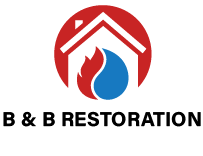What Are the Most Common Causes of Water Damage and How Can They Be Prevented?
Water damage can be a devastating event for homeowners, leading to costly repairs, health risks, and a loss of property value. It’s essential to understand the common causes of water damage and take proactive measures to prevent it. By identifying potential risks and addressing them before they escalate, homeowners can protect their properties and avoid the headaches that come with water damage.
In this article, we’ll discuss the most common causes of water damage and provide actionable tips on how to prevent them.
What Is Water Damage?
Water damage occurs when excess water infiltrates areas where it shouldn’t be, leading to damage to the structure, furniture, or belongings within the affected space. Water can enter through a variety of channels, including leaks, flooding, or faulty plumbing systems. Whether the damage is caused by a burst pipe, a natural disaster, or an unnoticed leak, it can quickly lead to significant problems like mold growth, structural issues, and even electrical hazards.
Common Causes of Water Damage
Understanding the causes of water damage is the first step in preventing it. Here are the most frequent culprits that contribute to water-related issues in homes.
1. Leaky Pipes
Leaky pipes are one of the most common causes of water damage. Over time, pipes can corrode, crack, or loosen due to pressure, age, or environmental factors. These leaks can go unnoticed for a long time, especially if they occur behind walls or under floors.
Prevention Tip:
Regularly inspect exposed pipes for signs of leaks or corrosion. Hire a plumber to inspect hidden pipes periodically, especially in older homes. Replacing aging pipes and seals can help prevent costly water damage.
2. Faulty Appliances
Many household appliances rely on water, and when they malfunction, they can cause significant water damage. Common appliances like dishwashers, washing machines, water heaters, and refrigerators with ice makers can all develop leaks if they are not maintained properly.
Prevention Tip:
Inspect your appliances regularly for signs of wear and tear. Check hoses for cracks or leaks, and replace them if necessary. Consider using a water shut-off valve with appliances that use water to prevent damage in case of a malfunction.
3. Clogged Drains
Clogged drains can lead to water backup, especially in sinks, showers, and bathtubs. If water is unable to flow freely through your drainage system, it can overflow and damage floors and walls. In more severe cases, sewage backups can occur, posing both water damage and health risks.
Prevention Tip:
Avoid pouring grease, food, or other debris down drains. Use drain covers to prevent large particles from blocking the pipes. If you notice slow drainage, clear the pipes promptly to avoid a clog from worsening.
4. Roof Leaks
The roof is your first line of defense against the elements. However, over time, wear and tear, weather conditions, or poor maintenance can lead to leaks in the roof. Roof damage often leads to water entering the attic, walls, and ceilings, causing structural damage and mold growth.
Prevention Tip:
Inspect your roof regularly for missing shingles, cracks, or debris that could prevent proper drainage. Clean gutters frequently to ensure water flows freely off the roof. If your roof is old or showing signs of damage, consider having it repaired or replaced by a professional.
5. Basement Flooding
Basement flooding is a common concern, especially for homes with poor drainage systems. Heavy rains, groundwater seepage, and broken sump pumps can all cause water to enter the basement. If not dealt with quickly, this can lead to serious damage to the foundation, walls, and personal belongings.
Prevention Tip:
Ensure that your basement is equipped with a functioning sump pump and backup battery system. Install proper drainage around the foundation of your home, including downspouts that direct water away from the house. Waterproofing the basement can also help prevent moisture intrusion.
6. Natural Disasters and Flooding
Severe weather conditions such as heavy rains, hurricanes, or floods can overwhelm even the most well-maintained homes. Flash floods, in particular, can cause water to enter the home quickly, leading to widespread water damage.
Prevention Tip:
If you live in an area prone to flooding, consider elevating your home’s foundation or installing flood barriers. Keep flood insurance up to date to help cover repairs. Ensure that your home has proper drainage systems in place, and regularly clear gutters and drains to prevent blockages.
7. Condensation
Condensation occurs when warm, moist air comes into contact with cooler surfaces like windows, walls, or pipes. Over time, this moisture can accumulate, leading to water damage, especially in areas with high humidity levels, such as bathrooms, kitchens, and basements.
Prevention Tip:
Use exhaust fans in kitchens and bathrooms to reduce moisture buildup. Invest in a dehumidifier to regulate indoor humidity levels. Ensure that windows are properly sealed to prevent condensation from forming on the glass.
8. Broken Water Lines
A broken water line can cause catastrophic water damage, especially if it occurs in a main line or is located near key structures of the home. These lines can break due to freezing temperatures, pressure changes, or age.
Prevention Tip:
Insulate water pipes in areas that are exposed to cold weather. Regularly check for leaks or pressure changes, and immediately repair any issues to avoid the risk of a burst water line. For older homes, consider replacing aging water lines with more durable materials.
How to Prevent Water Damage in Your Home
Water damage can be prevented by taking proactive measures around the house. Here are some additional ways to safeguard your home:
- Maintain gutters and downspouts: Regularly clean gutters and ensure downspouts are directed away from the foundation to prevent water accumulation around the home.
- Install a sump pump: A sump pump is essential for homes with basements. It helps prevent water from accumulating and flooding your home during heavy rains or snowmelt.
- Seal windows and doors: Ensure all windows and doors are properly sealed to prevent rainwater from entering the home. Apply weatherstripping or caulking where necessary.
- Monitor water usage: Keep an eye on your water bill for sudden spikes, which can indicate a hidden leak. If you notice unusual increases, investigate the issue immediately.
- Regular home inspections: Hire a professional to inspect your plumbing, appliances, roof, and foundation on a regular basis. Early detection of issues can prevent significant damage down the road.
Conclusion
Water damage can cause significant harm to your home, but by understanding the common causes and taking preventive measures, you can reduce the risks and protect your property. Whether it’s maintaining plumbing, addressing roof issues, or preparing for severe weather, being proactive is key to keeping your home safe from water damage. With proper care, your home will be better equipped to handle the challenges that water damage can bring.
FAQs
1. What should I do if I notice water damage in my home?
If you notice water damage, it’s important to act quickly. Turn off the water source if possible, remove valuables from the area, and contact a professional water damage restoration service immediately to mitigate the damage.
2. Can water damage be covered by insurance?
Water damage may be covered under homeowners’ insurance, depending on the cause of the damage. It’s essential to review your policy to understand what is covered and to keep your insurance up to date.
3. How can I protect my home from water damage during a storm?
To protect your home during a storm, ensure that all windows and doors are properly sealed, clean gutters, and consider installing flood barriers or sump pumps. If necessary, evacuate the area if the storm poses significant risks.
4. How long does it take to repair water damage?
The time it takes to repair water damage depends on the extent of the damage. Minor issues can be addressed in a few days, while more severe damage may take weeks to fully repair. A professional restoration company can provide a more accurate timeline.

